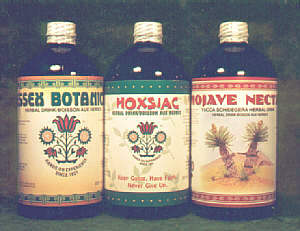

 he emergence in popularity of native medical herb formulas,
recognized as the primary healing therapies of indigenous
groups for generations, if not hundreds of years, has
not been without a fight. All three of the herbal tonic
formulas discussed on this page have common elements --
all are the descendants of formulas used by various
tribes of North American indians, all have proven medicinal
properties -- even though degree of efficacy is
debatable -- all are relatively cheap to make, all are
non-toxic (taken as directed), all
correspond in their effects to far more expensive
drug products, and all have been denounced, at one time
or another and with varying levels
of intensity, as absolutely worthless by the
orthodox medical community.
 This page introduces
each product, indicating its history, the underlying formula,
the proper protocol, its known properties, our own comments
on effectiveness, and useful, related web links.
Essex Botanical TM
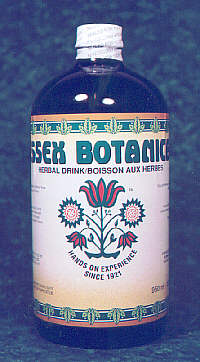
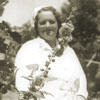
 The "essiac formula" casts an enormous
shadow among branded names in the North American herbal community. Behind the product is the
true life legend of "Cancer nurse" Rene Caisse
("essiac" is Nurse Rene's last name spelled backwards).
During the life of her clinic
(1934 to 1942), Caisse is reported to have cured many hundreds of cancer -- of
varying types and stages of development -- and for free.
(In fact, 55,000 Canadians signed her petition to the Ontario
Legislature in favor of her treatment, in addition to 387
patients and an uncounted number of medical doctors).
She did it primarily on the strength of just one product,
which became known as "essiac."
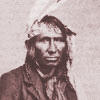
 But Caisse did not invent
the essiac formula (the lower case "e" is intentional: Essiac®
is a registered trademark owned by Dr. Pierre Gaulin (U.S.)
and Terry Maloney (Canada)). The basis for the formula is
rooted in native Ojibway (a tribe native to Ontario) medicine.
 In any event, what followed
after her death in 1978 is all too characteristic of pettiness
and greed we see in the orthodox community -- bickering and in-fighting
over trademarks, connection to the legend, and who does and who does not have
the "real" essiac formula.
 With dozens of essiac 'me-too'
products now on the market -- some of them true to the original formulation,
most of them not, we chose to use the same Canadian source for
the essiac formula that we chose for the Hoxsey formula (see below).
After a careful review of the underlying documentation, we believe
it to be formulated as close to the original as one will find on
the market - anywhere.
 Essex Botanical Essex Botanical is only priced lower.
 Our Assessment: Our Assessment: Among
phytopharmacologists, the active components within the essiac formula
are quite well known, collectively fitting a category at Alpha Omega Labs
that we call "mildly cancerolytic." To call it a "cancer cure" is a
real stretch, though there can be no doubt that it is of real benefit
as a 'nutraceutical cocktail' for most cancer patients. You should use this formula
for the same reason that you should listen to nutritionists who advise
you to take regular fresh helpings of chemopreventatives in
your diet -- cruciferous vegetables, like broccoli; tomatoes, for
their lycopenes; pau d' arco tea, for its hydroquinones, etc.
(Read our Health Zone section).
 As we've said countless times
on this site, fighting cancer should be viewed as waging war.
And you rarely win a war with only one weapon.
|
Great Quotations From The History of Orthodox Medicine
 "Qualified experts recognize
that the only treatment for internal cancer is surgery,
x-ray, radium and radioactive products."
 Federal Circuit Court (Texas) Federal Circuit Court (Texas)
From You Don't Have To Die, p. 25
By Harry M. Hoxsey, N.D.
(taken from ruling issued July, 1953)
|
Hoxiac TM
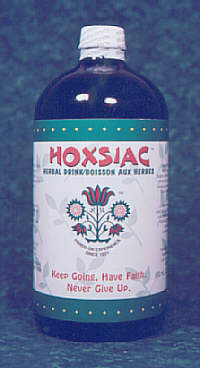
 Far more dramatic than even the
"essiac story," is the true life of Harry Hoxsey. (We discuss Hoxsey's
work in several other places on this site, and even provide
a free and unabridged viewing of Kenny Ausubel's movie,
Hoxsey:
How Healing Becomes a Crime, which you can purchase
elsewhere on the web, along with the book -- same title.)
Few stories in this
business elicit such deep pathos, and few figures in
the last century are as polarizing between the forces
of orthodoxy and those of the alternative community
as that of Hoxsey.
 If Caisse was subdued
and less given to self-promotion (perhaps reflective of the Canadian
character) than Hoxsey was her anti-thesis. His
"damn the torpedoes, full speed ahead" approach
provided him with a cavalcade of court actions
by medical authorities and their lapdogs at
the U.S. FDA. In 1956 Harry Hoxsey published
his signature work, You
Don't Have To Die -- the title itself a mere
prelude to a work that is largely invective of
a cancer establishment which even back then was
incorrigibly out of control.
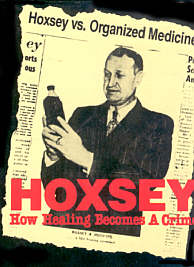
 No doubt, Hoxsey's personal
style lent itself to those who would simply dismiss him
as a quack. But the many hundreds of cured cancer patients
who managed to show up at Hoxsey's trials to testify --
hundreds out of thousands of documented cases, served only
to delay the inevitable: the closing of Hoxsey's 17 successful
cancer clinics and the exodus of his legacy to Tijuana,
Mexico, which would be run by his protege, Mildred Nelson
(yes, another nurse -- and though she has passed on,
the "Hoxsey Clinic" still operates today.)
 Did Hoxsey discover
the "Cure for Cancer"?
 The answer is not a
simple one. As to skin cancers, we have no doubt that
Hoxsey's topical formula was a success. Unlike Rene
Caisse, Hoxsey didn't hide his formulas. The ingredients
in his topical can be found on page 47 of his book.
Hoxsey's topical formula is in the same escharotic
category of herbal remedies as our own
Cansema Salve,
which has its own long history of effective use.
We know from his explanation of the formula, coupled with our
own experience, that it works. (In fact, medical authorities
were forced to admit in one of Hoxsey's court proceedings
that his topical formulas work successfully -- details which
Hoxsey proudly related in Chapter 15 of his book.)
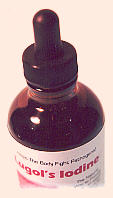
 Internal cancers are
another matter.
 We know from the many
people who have been to the Hoxsey clinic in Mexico that their
internal remedies fail a large percentage of users. But, like Essiac,
should the "Hoxsey formula" be used as a cancer treatment system? Or as
an adjunctive product, taken for its nutraceutical benefits?
We would suggest the later.
 One note about this
formula. Hoxsaic reflects improvements since the time
of Hoxsey. On pages 45 and 45, Hoxsey lists his ingredients
as potassium iodide, licorice, red clover, burdock root, stillingia root,
barberis root, poke root, cascara, Aromatic USP 14,
prickly ash bark, and buckthorn bark. Some immunosupportive
herbal concentrates (i.e. cat's claw, bladderwrack, sheep sorrel)
have been added to Hoxsiac, while the obvious
omission (largely for legal reasons in Canada) is the potassium
iodide; buckthorn bark, cascara sagrada, poke root,
and berberis root. (Those with a mind for detail will note that
the both the Hoxsey and essiac formulas contained
burdock root and Queen's delight (i.e. stillingia).)
 The
use of Lugol's iodine, as directed
and running concurrently with Hoxsiac, would
help the potassium iodide exclusion. (Lugol's is 2:1 potassium
iodine to iodine crystal.) But a better choice would be
a special product more specifically designed for this purpose
Potassium Iodide Hoxsey Solution (see below).
 On the issue of the
Hoxsey formulae origin, we also take up issue (though it may
be of small importance). Harry Hoxsey attributed their origin
to his great grandfather, John Hoxsey, and an incident involving
a sick horse that took place in the Fall of 1840. (Details are
provided in Chapter 5 of his book, but not before getting
a short lesson on the Hoxsey family tree.)
The "Hoxsey" discovery of 1840 may or may not have happened,
but one thing is clear: the botanical ingredients used by
Hoxsey were clearly in use by native American medicine men
at that time. So well documented is this indigenous use
that we find it doubtful that Harry Hoxsey's great grandfather
would not have been exposed to a good deal of this knowledge
prior to having his herbal epiphany.
 Our Assessment: Our Assessment: The
internal Hoxsey formula has, in our opinion, a true value as
a nutraceutical aid, just as the essiac formula does. We find
no issue with the thousands of people who claim that either the
essiac or Hoxsey formula provided a real cancer cure. As we
noted in our article on
apricot seeds, you will find a number of natural botanical
sources that various individuals will point to as the source
of their cure. However, in our mind, to be a true "cure," a given
product must prove effectiveness in a preponderance of cases. Critics
have been quick to point out, post mordem, that Hoxsey
himself had cancer at the end of his life -- though, as
Ausubel's movie on Hoxsey notes, supporters are
quick to counter that this was not his true cause of death.
|
Potassium Iodide 16% Hoxsey Solution
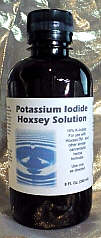
 The ingredient particulars
of the original internal Hoxsey formula have been
well-documented,
and many formulas (including Hoxsaic) that use his name or allude to his
work leave out, for one reason
or another, a crucial ingredient that even Hoxsey himself said was crucial to making
his internal formula "work" --- potassium iodide, 7.7% to be
precise, in his
original tonic. (We discussed this ingredient and its use quite briefly
in our Lugol's Iodine page,
which users of this formula are advised to read in its entirety.)
What we have done, for those who want to try or experiment with
the original Hoxsey formula, is created stabilized potassium iodide
formula that is calibrated so that if you add it 50/50 with
Hoxsiac or similar cancerolytic herb formulas, you will be imitating,
in exact proportion, the potassium iodide in the original formula.
Note that this product is nowhere near as strong, as an oxidizing
agent, as Lugol's, nonetheless, you should take care in using
this formula. Like all nutrients, you can overdue your iodine
intake (Dr. J.C. Jarvis, M.D. notes, among other things,
that a "moist nose" will
develop if you overdue it -- again, discussed on the
Lugol's page.
U.S. Users: please note the usual legal caveat found in
the upper right hand corner of this page.
 Ingredients:
Ingredients: Distilled water, potassium iodide (16%), grain
alcohol (10% by weight, 96% purity).
|
Mojave Nectar
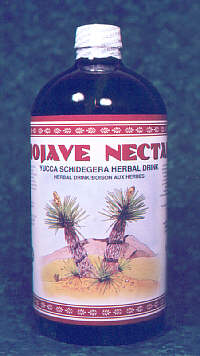
 The third in our current series
of natural North American herbal medicinal tonics centers on
the yucca -- a prized botanical used extensively by native tribes
of the Southwestern U.S. and Northern Baja California (Mexico).
A common practice among indigenous desert tribes was to
dry the fleshy fruits and eat them during the winter;
a fermented drink was also prepared from the yucca fruit.
 Yucca is a member of the lily
family, and one species in particular, Yucca Schidegera, is known
to have a higher content of its primary medicinal component,
saponin, than any other yucca variation. Saponins are not exclusive
to yucca, (in fact, soy protein products tend to be relatively high in
saponins), but yucca is a more abundant source.
 Saponins serve important
nutraceutical roles as antioxidants, antimutagens, and even
antiretrovirals in vitro HIV studies and anti-DNA virals in
Epstein-Barr virus inhibition studies. (See
Dr. Suzanne Paxton's
summary on the medicinal effects of saponins).
 However, one quarter where
yucca schidegera has probably received the attention is in
the arthritic community, where some refer to this species
as "Nature's own cortisone." One noted arthritic specialist,
Dr. Bernard A. Bellows, M.D., has noted,
"It isn't clear how the yucca extract benefits the arthritis sufferer.
Some patients reported they noticed diminution of swelling and stiffness in
the joints and those patients suffering from gastrointestinal disturbances
associated with arthritis stated yucca was beneficial".
 Our Assessment: Our Assessment: Saponins
appear to be an important class of nutraceuticals with yucca being
a high potency source. The Mojave Nectar product contains
over 25% yucca concentrate, in a water/honey base, with the balance
filled with adjunctive herbal support extracts. Once again, we do not
promote Mojave Nectar as a curative or therapeutic product,
but as a valuable nutruceutical adjunct.
|
 To U.S. Users: The information
presented on this page and the products discussed have not been
evaluated by the U.S. Food & Drug Administration. These products
are not intended to diagnose, treat, cure, or prevent any disease. To U.S. Users: The information
presented on this page and the products discussed have not been
evaluated by the U.S. Food & Drug Administration. These products
are not intended to diagnose, treat, cure, or prevent any disease.
|
Product Info
Essex Botanical
 The four primary "essiac" herbal extracts are: The four primary "essiac" herbal extracts are:
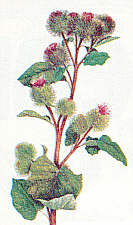 Great Burdock
(Arctium Lappa)
Great Burdock
(Arctium Lappa)
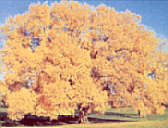 Slippery Elm
(Ulmus Rubra)
Slippery Elm
(Ulmus Rubra)
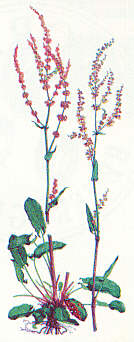 Sheep Sorrel
(Rumex Acetosella)
Sheep Sorrel
(Rumex Acetosella)
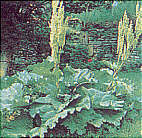 Turkey Rhubarb
(Rheum Officinale)
Turkey Rhubarb
(Rheum Officinale)
 'Essex Botanical' Ingredients: 'Essex Botanical' Ingredients: Purified water
(by reverse osmosis), burdock root (arctium lappa),
sheep sorrel (rumex acetosella),
slippery elm bark (ulmus rubra),
and turkey rhubarb root (rheum officinale).
 Directions for Use: Directions for Use: Take
30 ml or 60 ml (one or two ounces) one to two times daily, cold
from the bottle or mixed with warm distilled water. Take at least
15 minutes before eating in the morning and at least 2 hours
after eating in the evening.
Hoxsaic
 Among the most essential botanicals
in the Hoxsey formula are: Among the most essential botanicals
in the Hoxsey formula are:
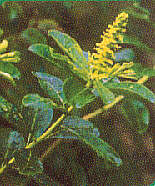 Queen's Delight
(Stillingia Sylvatica)
Queen's Delight
(Stillingia Sylvatica)
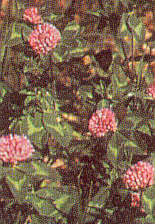 Red Clover Blossoms
(Trifolium Pratense)
Red Clover Blossoms
(Trifolium Pratense)
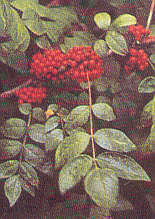 Prickly Ash
(Zanthoxylum Americanum)
Prickly Ash
(Zanthoxylum Americanum)
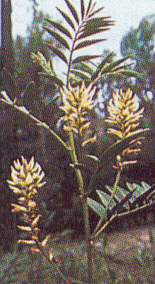 Liquorice Root
(Glycyrrhiza Glabra)
Liquorice Root
(Glycyrrhiza Glabra)
 Ingredients: Ingredients: Purified water
(by reverse osmosis),
licorice root (glycyrrhiza glabra),
red clover blossom (trifolium pratense),
burdock root (arctium lappa),
queen's delight root (stillingia sylvatica),
cat's claw bark (uncaria tomentosa),
prickly ash bark (zanthoxylum americanum),
sheep sorrel herb (rumex acetosella),
turkey rhubarb root (rheum officinale),
slippery elm bark (ulmus rubra),
bladderwrack herb (fucus vesiculosus).
 Directions for Use: Directions for Use: Take
30 ml or 60 ml (one or two ounces) one to two times daily, cold
from the bottle or mixed with warm distilled water.
Mojave Nectar
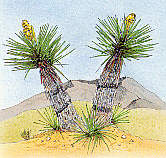 Yucca Plant
(Yucca schidegera)
Yucca Plant
(Yucca schidegera)
 Primary Ingredients: Primary Ingredients: Purified water
(by reverse osmosis), honey, yucca schidegera. Secondary Ingredients:
Cinnamon bark (cinnamomum zeylanicum),
clove buds (syzygium aromaticum),
rose hips (rosa canina),
peppermint leaves (mentha piperita),
myrrh gum (commiphora molmol),
licorice roots (glycyrrhiza glabra),
fennel seeds (foeniculum vulgare),
burdock roots (arctium lappa),
tumeric (curcuma longa),
wild cherry bark (prunus serotina),
elderberry (sambucus nigra),
caraway seeds (carum carvi),
Spanish saffron (crocus sativus),
carline thistle roots (carlina acaulis),
zedvoary roots (zedoaria roscoe),
manna (fraxinus ornus),
and less than eight hundredth of 1% sodium
benzoate and potassium sorbate as preservatives.
|




 Federal Circuit Court (Texas)
Federal Circuit Court (Texas)










 Prickly Ash
Prickly Ash Liquorice Root
Liquorice Root